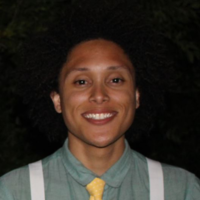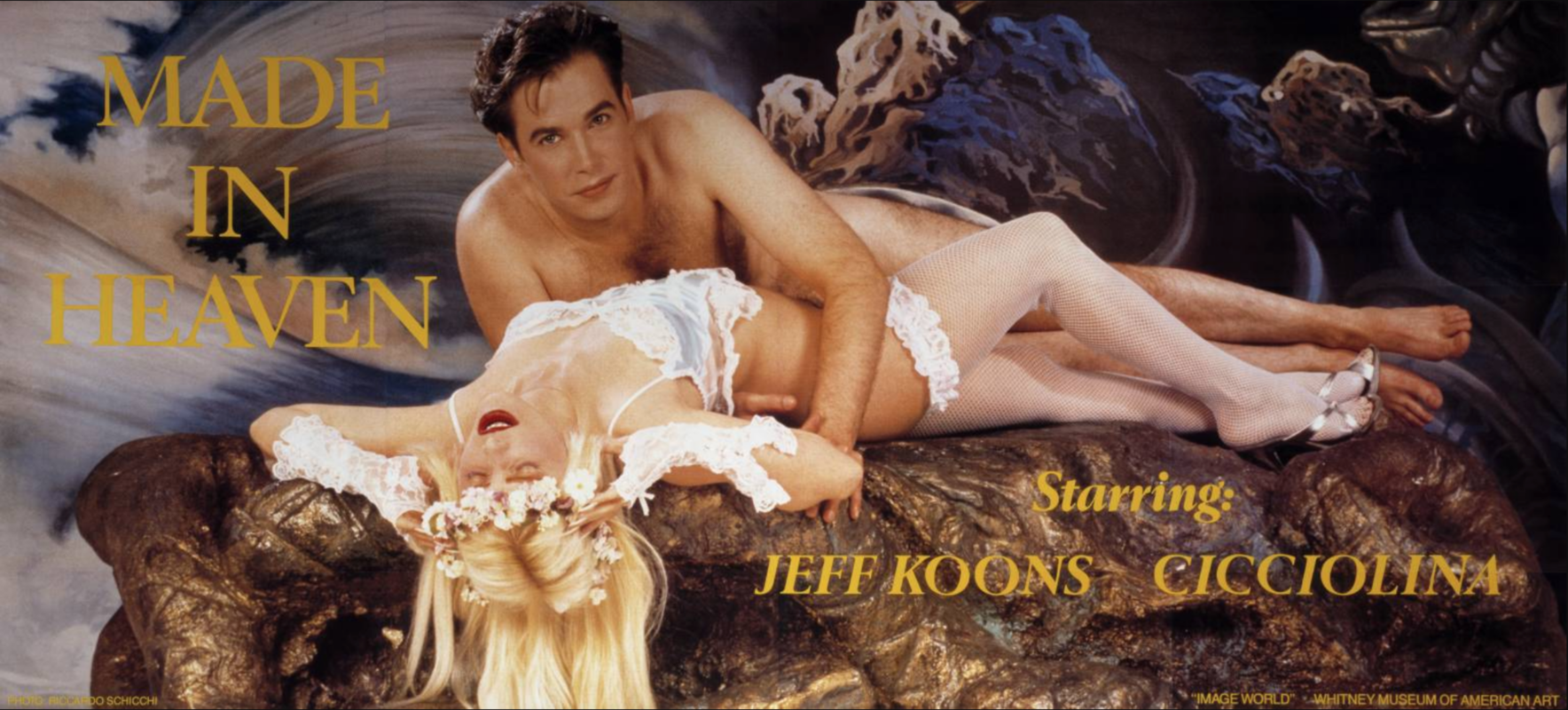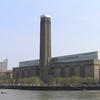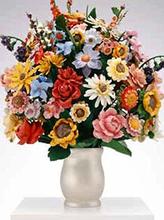More about Made In Heaven
- All
- Info
- Shop

Contributor
Dreamy, provocative, and most importantly—artificial.
These are the three main ingredients that make up Made In Heaven, and it’s polarizing public reception. The art series centralized Koons’ relationship with pornstar Ilona Staller, also known as Cicciolina (translates approximately to “cuddles”) and featured large photographs resembling movie posters, and sculptures of the two having sex. The idea of course, was to push the boundaries of what we consider art to be.
This was in 1991. The '80’s were gone, and so were shoulder pads and Jheri curls. But something that the '80’s figured out—for better or for worse—is that sex sells. Okay we probably already knew that. But the '80’s fully embraced it in a way that was unapologetic. This is exactly what Koons was trying to capture. Especially the unapologetic part. That’s why Made in Heaven seems to buy into this aesthetic wholeheartedly. It takes place at the intersection of lust and jealousy, hell-bent on proving that sex too could be art.
There’s no gray area with this series. It’s either disgusting or it’s brilliant. It’s either art or it’s porn. No gray whatsoever. There’s obviously nothing wrong with nudity in art. It’s been a part of the medium for centuries. Koons even references Manet’s Olympia in one of his poses with Cicciolina to acknowledge that fact.
What seems to be the part of this series that crosses the line is that it features Koons and Cicciolina front and center. Upon its release, critics cited the fact that Koons posed as a porn star with his girlfriend and future wife who was an actual porn star, crossed a line that people were not comfortable with. New York Times reporter Micheal Kimmelman seemed to sum up these negative thoughts pretty succinctly: “Just when it looked as if the '80’s were finally over, Jeff Koons has provided one last, pathetic gasp of the sort of self-promoting hype and sensationalism that characterized the worst of the decade.” Probably pretty safe to say he didn’t take his family to see the show.
But that begs the question, if Koons didn’t feature himself and Cicciolina—two individuals that people recognize from the real world—would it have been seen in the same negative light? Koons himself said that he thought of himself and Cicciolina as universal, like they were vessels for the audience to fill themselves into. Not sure if that resonated. Especially when you take into consideration that this series is very straight and very white. There’s a lot more ways to get busy in heaven, my guy.
But regardless of the polarizing reception, Made in Heaven was a pretty big deal. It was talked about nonstop. That was the true goal anyways. But that banal biblical bliss was short lived for Koons and Cicciolina. They didn’t know each other at all before the photoshoot, and quickly grew fond of one another during the process of making the series. They wound up having a son named Ludwig, then got divorced over a year later and Cicciolina fled to Italy even though Koons was granted custody. Fourteen years and millions of dollars of legal proceedings later, things didn’t get much better. Koons sold art and personal materials in order to just try and see his son. But that didn’t amount to anything. And as tragic as that is, the one thing you can say is that regardless of the bumps in the road, a child was brought into this world. And art played an important role in that. Out of everything in this series, Ludwig was the one thing that wasn’t artificial. He was the one thing that was truly made in heaven.
Sources
- Abrams, Amah-Rose. “Jeff Koons Talks Creativity, The Market, and Cicciolina.” Artnet News. July 6, 2015. https://news.artnet.com/exhibitions/jeff-koons-talks-creativity-market-…
- Michalska, Magda. “Is Jeff Koons’ Art Pornography?” Daily Art Magazine. May 30, 2017. https://www.dailyartmagazine.com/jeff-koons-pornography/
- Popham, Peter. “The Ex-Factor: La Cicciolina and the Divorce from Hell.” Independent. May 29, 2008. https://www.independent.co.uk/news/world/europe/the-ex-factor-la-ciccio…
- The Art Story. “Jeff Koons - Important Art.” Accessed June 30, 2019. https://www.theartstory.org/artist-koons-jeff-artworks.htm














Comments (4)
WHY do people even like Koons??
I did not know that about his son. Never thought I'd feel pity for Jeff Koons...
One star, enough said.